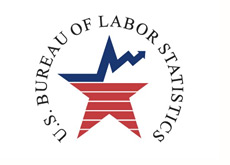"Real" Unemployment Rate in March was 15.6%
 The March unemployment numbers in the United States were released earlier today, with the "official" March number coming in at 8.5%.
The March unemployment numbers in the United States were released earlier today, with the "official" March number coming in at 8.5%.A total of 663,000 jobs were lost in March, bringing the unemployment rate in the United States to a level not seen since November of 1983.
However, many people are starting to ask the question - why is the "official" unemployment rate so low, especially considering the fact that we are very likely living through a depression right now?
Many in the media are starting to catch on to the fact that there are different sets of unemployment numbers.
The LA Times had a piece on it here, while the Wall Street Journal also had a write-up on it here.
The "official" unemployment number is the U-3, which came in at 8.5% in March.
The U-6 unemployment number, which is considered to be a broader measure of unemployment, came in at 15.6% in March.
What's the difference between the two numbers?
Well, the U-6 unemployment number contains two very important groups of people that the U-3 unemployment number does not:
1. Marginally attached workers, who are people that are not currently looking for work, but have indicated that they want and are available for a job, and have looked for a job sometime in the past 12 months.
2. People who would like full-time work, but need to take part-time jobs due to "economic" reasons.
Marginally attached workers also include "discouraged workers", who are people that have become completely disillusioned about their prospects for finding a job, and have all but given up the search.
If you feel as though the economic situation is much worse than what the "official" unemployment numbers would seem to indicate, you are right - the government isn't telling you the whole story.
According to the government's official unemployment numbers, a person who has given up on finding a job (but wants one and has looked for one recently) is not considered to be unemployed.
According to the government's official unemployment numbers, a person with a degree in engineering who is forced to take a part-time job at Walmart (even though they desperately want full-time work) is not considered to be unemployed.
Many in the media like to compare our "official" unemployment numbers with those witnessed during the Great Depression. They like to point out that our current economic hardships are nothing compared to the 25% unemployment rates experienced during the 1930s, at the height of the Great Depression.
This, however, is comparing apples and oranges.
The U-3 unemployment rate wasn't utilized back in those days - instead, the broader measure of unemployment was used.
Things aren't as bad as there were at the height of the Great Depression - however, things aren't nearly as rosy as the 8.5% "official" unemployment rate would like to suggest.
Filed under: The Economic Meltdown



